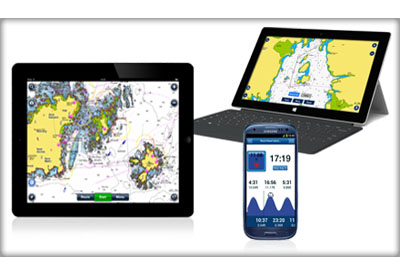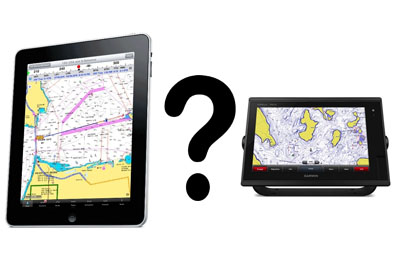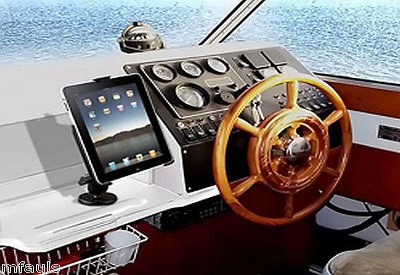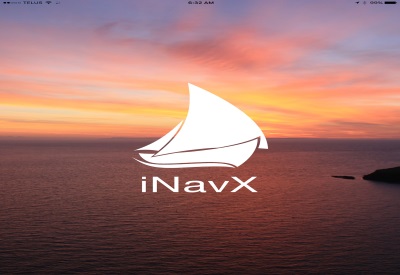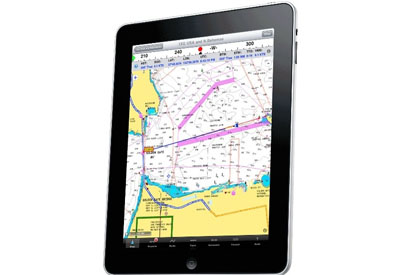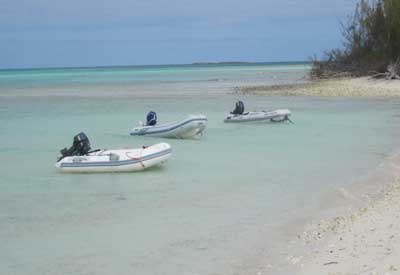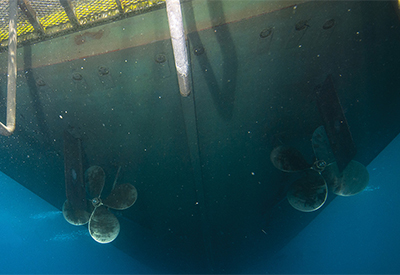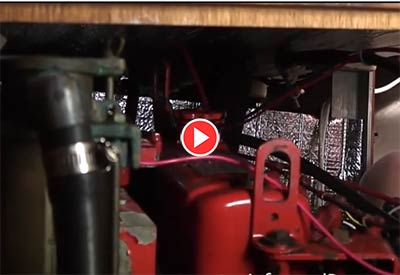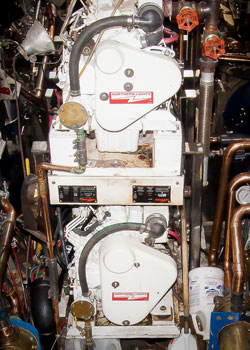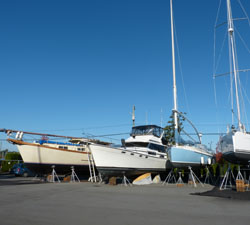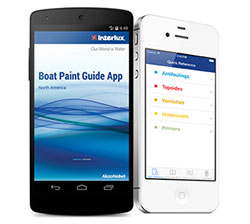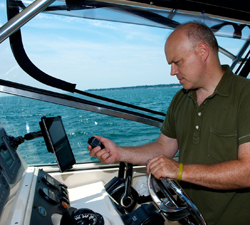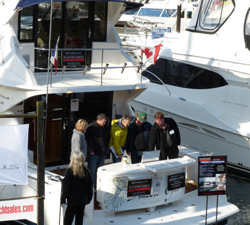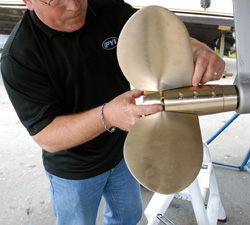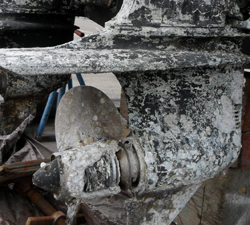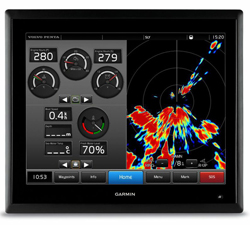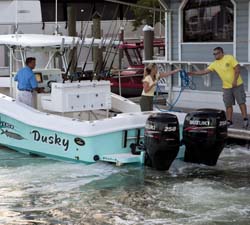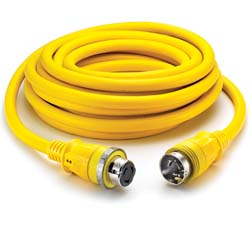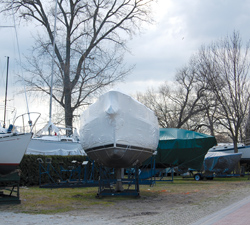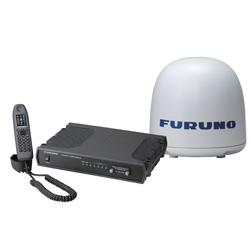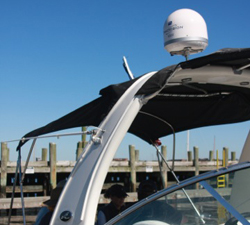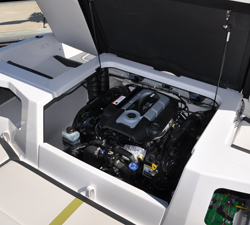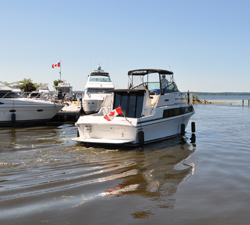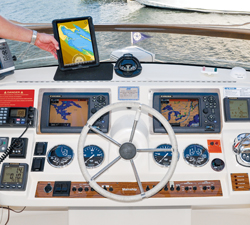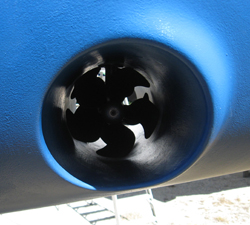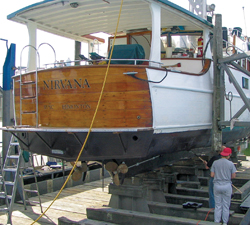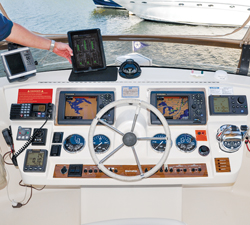August 22, 2017
Going iPad or Android for Marine Navigation
Since the initial article of this series we have looked at the iPad and its use as a marine navigation instrument. We have discussed its functionality, available apps, relevant hardware and compared it to traditional charplotters. This focus on iPad led one of our readers to an interesting question that we have yet to address. Question: Why has the focus been solely on the use of iPads for marine navigation rather than Android devices?
July 25, 2017
Going iPad or Chartplotter, Which is Right for You?
In Going iPad with Marine Navigation we concluded that iPads provide a modern platform for marine navigation. No we shall explore how functional an iPad is in comparison to standard chartplotters.
June 21, 2017
Going iPad for Marine Navigation: Mounting, Protecting and Charging
Question: Is it possible to mount, protect and charge your iPad during marine navigation. Answer: Yes, but it often requires some creative thinking and typically purchasing separate accessories for each duty.
June 15, 2017
Staying Connected
Not many of us need to stay connected to our global business empire while cruising (the 0.01 %?), but a pretty sizeable percentage of boat owners do need to keep in contact whether for business or family reasons.
April 25, 2017
Going iPad With Electronic Marine Navigation With Owen Hurst
There is a good deal of hesitancy and lack of understanding as to whether an iPad can fully replace existing navigation equipment. Quite simply put the answer is yes!
December 4, 2016
Confident Sailor – Reluctant Sailor – Part 3
Before leaving on an extended cruise, it is critical to inspect and maintain all systems on your boat.
May 11, 2016
Perfect Prop for your Purpose – Part 2
A propeller is only as effective as the rest of the drive system. This is a bold statement; but the two experts I talked with while researching…
March 17, 2016
Light Up Your Cruising Nights
Informed estimates are that barely 10% of Canadian pleasure craft have underwater lighting but in Florida it’s a far higher percentage. And, among new luxury cruisers…
March 17, 2016
Perfect Prop for your Purpose
This article is the first of 2 parts. Part 1 deals propellers for displacement boats and Part 2 will cover the rest of the drive train…
November 19, 2015
Pinging the Unknown
Sunshine flooded the waters separating California’s Catalina Island from Channel Islands Harbor, and Capt. Tom Petersen, skipper of the well-equipped Sea Ray 55 Sundancer Valkyrie, was leading a small flotilla when an unexpected fog bank quashed visibility. While Valkyrie carries the latest Raymarine kit (Petersen is a Raymarine Pro Ambassador), including a 12 kW, six-foot, open-array high-definition radar, Petersen’s companions weren’t electronically fortified. “I sat behind the other boats, watching them on my radar and maintaining radio contact,” said Petersen.
November 4, 2014
Winterizing Your Boat – Oil Change 101
Winterizing your boat in the fall is important and may be a daunting task for some boat owners. This is a DIY project that you CAN do on your own though. Rob MacLeod, The Informed Boater, has put together a how to video with simple step-by-step instructions for completing an oil change, which is a good idea at the end of the season as part of the winterizing process.
July 11, 2014
Power On The Hook
Boaters who prefer to be on the hook, such as ourselves in our Islander 36 sailboat Holole’a, greatly extend their cruising experience. There are many more bays and nooks and crannies available when using the anchor. And it is free! However, the one big issue is electrical power. The boat has to be self-contained for storing electrical power (batteries), recharging the batteries, and providing 120 Volt electrical power (main engine with alternator or dedicated genset). Solar panels can help recharge batteries also.Most boats use deep-cycle batteries for the house battery system. These are batteries that can tolerate hundreds of cycles of a 50% discharge. Without getting too technical, they are generally robust batteries of lead-acid, gel-cell, or AGM (absorbed glass matt) construction. The common physical sizes for 12 volt systems can vary from Group 24 (common car size), to golf-cart 6 volt batteries (connect 2 in series for 12 volts) up to massive and very heavy 4D and 8D. Battery banks can be added in parallel for more capacity.
March 25, 2014
How To Clean Onboard Electronics
With built in functions for radar, weather, chart plotters, engine data, and radio controls, boat owners are constantly touching their on-board electronics. Also, many boats with a more open design get a lot of salt spray on their dash as well. Shurhold Industries offers tips on how to properly clean a boat’s electronics.
March 24, 2014
Smarter Spring Commissioning
Understanding how systems really work – and degrade over the winter – can help you prepare your boat for a trouble-free season. Here’s a guide from a pro…Sometimes the most daunting thing about launching your boat in the spring is slogging through the checklist designed to “help” you do it. And no wonder: commissioning efforts for Canadian boaters run the gamut from paying a full-service yard to re-commission every system on board to putting away the one lonely space heater that’s been wheezing away on the salon floor since Thanksgiving.
March 19, 2014
Need To Find The Right Paint For Your Boat? Now There is an App for That.
The Interlux® Boat Paint Guide has gone digital with the launch of a free app for Apple® IOS and Android smartphones and tablets, designed to make it easy to access Interlux product information and select the correct Interlux paint system.
February 24, 2014
Marine Mobile and Apps
Convenient, Cool and Low-cost!From simple organizational Apps for your smart phone to complete wireless devices and systems, there are a rapidly growing number of products available to the average boater today. As more boaters integrate their personal wireless devices with their cruising life, the market for marine mobile devices and applications increases. The plus to this trend is that there are so many new and powerful options available to all level of boaters. The minus to this trend is that there are so many options!
January 21, 2014
Boat-Shopping at the Shows
If you are new to boating, how do you start searching for the right boat at boat shows? We put the question to yacht brokers east and west.The benefit of the boat shows is that they allow buyers to explore all the options available to them. You get to look at sailboats and powerboats, small boats and big boats, and everything in between.
November 4, 2013
Folding and Feathering Props
Under sail, these marvels of engineering deliver significantly less drag and greater speed than their traditional fixed-blade cousins. When I started sailing, the economical way to reduce propeller drag on a cruising sailboat was simply to install a two-blade prop. This worked fine – we had one on our 35’ sailboat for almost 30 years. Mind you, it didn’t provide a lot of push in steep seas and headwinds, and we often used the mainsail to help punch us through a chop. Folding and Feathering Props
October 10, 2013
Make New Anodes: Part of Your Haul Out Checklist
When it comes time to haul out this year, plan to give all your underwater gear a close inspection, measure and replace your anodes now and know you are ready for next season. In the fall, you can do this at your leisure. Understandably, we seem to be in a rush to launch again each spring and once the boat is in the water, replacing anodes is difficult to say the least!
October 10, 2013
Volvo Penta and Garmin Work Together to Make Boating Easier
I was delighted to be invited to Gothenberg, Sweden at the end of June where Volvo Penta hosted an exclusive new product media introduction with a careful selection of approximately 50 marine journalists from 14 different countries including Argentina and Brazil from South America. There were just three journalists from North America, and I was the only one from Canada – very flattering!
August 20, 2013
Don’t Do It Yourself!
It’s not just a matter of cost – there are simply lots of people who enjoy puttering around on their boats and doing their own mechanical work. There are many useful tasks that an owners can do to keep their own little ship “shipshape”, however there are some things where we say, don’t do it yourself! Generally, your fuel system is not a DIY item. For safety reasons alone, a boat’s electrical wiring and grounding systems should always be handled by a qualified marine technician. But, there are other areas where home handyman knowledge can get you into trouble.
August 20, 2013
Aftermarket Joystick Docking for Twin Outboards
Absolutely and without a doubt, the biggest advance in boating in recent memory has been the introduction of joystick docking. With these new systems, first pioneered in recreational boating by Volvo Penta in their IPS pod drive systems, docking a large boat in tight quarters, windy conditions, or in strong current was transformed from a task that would challenge the most experienced captain to something a child could do. Children took to it almost immediately because joystick docking was so similar to their videogame controls and so intuitive to use; point the joystick in the direction you want the boat to go and it responds.
August 20, 2013
Marine Electrical Systems – Part II
This continues our look at improvements to marine electrical systems. Following on our feature on new battery technology, here we review re-charging those batteries, starting with shore cords and isolation transformers. We’ll follow with a subsequent review of generators as well as alternators, dynamos, solar panels and fuel cells. As we noted in the April 2012 Canadian Yachting on page 50, new battery technology is increasingly common in marine applications, but new technology batteries need to be well matched to charging systems and first, you need a power source.
August 2, 2013
Ten Winter Storage Dangers
A few people winterize and store their own boat. Many of us pay the pros to do it. Spring commissioning is far more rewarding because you are preparing for a great summer with your boat. Winterizing is a tough chore because we usually keep boating until the weather turns nasty, plus you are struggling with that “down-feeling” that the boating season is over. That makes it doubly hard to dig in and do a great job of winterizing and protecting your boat for the winter.
August 2, 2013
The Comforts of Home with Internet Onboard
It used to be that “all the comforts of home” meant an easychair, a pipe and the newspaper. Today, the easy chair is an office chair and the pipe is gone, no matter what we could have put in it. The poor old ‘paper’ newspaper has been replaced with an electronic version that carries pretty much all the same stories, plus streaming video, the ability to search, cut ‘n’ paste things you want to keep and stories that you can forward to friends and colleagues.
May 30, 2013
Going online – Onboard
Last year in Canada nearly 28 ½ million of us were online at least once a month, almost 83% of the population. Canada has just over 18 million people who are subscribed to Facebook. With stats like these, it’s no wonder that boaters have started to ask themselves: How is it possible to take the online experience onboard their boats? Traditionally boats have been a safe haven from the hustle and bustle of life. It’s a chance to unplug and unwind, to break the connection with the office and with the electronic world.
May 14, 2013
Before You Leave the Dock!
So the boating season has finally arrived and since you have been a diligent owner, all your spring outfitting has been carefully attended to. Everything on that spring check list has been duly checked off and your guests are on their way. The coolers are filled with drinks and snacks and you’re looking forward to great day on the water. However, as experience has taught us, we are at our most vulnerable when our guard is down. Routine can lull us into a false sense of security. Now is the time to make sure you have a proper procedure for departure, one that can make the difference between fun on the water and a day of frustration, or worse.
May 14, 2013
VHF, DSC, AIS and EPIRB
Why these acronyms should ring a bell. Communication is of the utmost importance when spending time on water; if anything goes wrong you want to make sure that you can alert someone close to your vessel to say that you are in need of assistance or that you are in danger. Using your cell phone on the water simply doesn't cut it. Cell phones do not provide the reliability that is needed on the water; coverage areas are different for each provider, signal strength is limited (or non-existent) when you are not close to shore.
May 13, 2013
Guide to Sewage Discharge Regs
New rules severely restrict where and how salt-water boaters can discharge sewage. Is your boat ready to comply? In May 2012 a significant environmental anniversary slipped by with little fanfare. It was the end of the promised five-year transition period before new sewage discharge regulations for small craft in salt waters, introduced in 2006-07, took full effect. From 2012 onwards all vessels in Canadian waters, fresh and salt, are covered by the same legislation regarding sewage discharge. Salt-water boaters have a bit more flexibility in pump-out options but the basic rules are now the same for fresh and salt water.
April 4, 2013
Fuel Filtration – Once Again, For the Record
There is no end of discussion and debate about the fuel filtration needs of diesel engines. Myths and half-truths abound. So let’s set the record straight. Diesel engines are the most reliable of all internal combustion engines; they are robust and they need only two simple inputs, air and fuel. Properly maintained they will perform well for upwards of 15,000 hours before needing a re-build. By contrast, that is about three times the life of a well-maintained gasoline engine.
April 4, 2013
Chasing Software – Stay Up to Date with Software Updates
There has been a real change in the focus and direction we’ve seen in marine electronics in recent years. Gone are the standalone equipment pieces, replaced by multifunction devices capable of “talking” to the other electronic devices on board your boat. To get first-hand information on what is really happening in the field, we traveled to CMC Electronics Esterline and spent the morning with Lead Technical Service Representative, Lorne Spence.
April 4, 2013
Spring Commissioning
Even if you are on salt water and your boat can safely stay in the water year-round, are you using it regularly? Metal fittings are corroding all the time, the sun beats down on fibreglass and woodwork, and the rain and damp air all contribute to the slow but inexorable process of deterioration. When engines are used, oil and other lubricants are warmed up, spread around and parts are kept running freely. Air circulates through the interior when you are out and moving. Boats just like to be used more than they like being stored.
March 8, 2013
On Board Entertainment
We all know how nice it is to have a great home entertainment system. Watching live sports on TV, surfing the Internet and listening to music are everyday activities that we take for granted. Because of the advances in technology, we can transfer this land-based enjoyment over to our boats. Wouldn't it be great if you could watch the latest golf tournament at your favourite anchorage, or listen to your favourite playlist from your iPod? All this is possible, and with the latest and greatest in marine technology, things like controlling your music through your MFD (Multi Function Display) and watching TV while underway, make it that much more appealing.
March 8, 2013
The iPad Onboard
Overnight, the iPad is revolutionizing the field of marine electronics. It offers versatility for charting, navigation and cruise planning, and there’s a fast-growing world of choice in practical helmside apps. Nautical software apps on the iPad are the big news in marine electronics this year. A full range of apps for use onboard is available, covering navigation, tide and current data, AIS reporting, cruising guides, reference books and more. Capabilities once costing hundreds of dollars for navigation software on the PC are now about $50 on the Apple App Store.
January 3, 2013
Boating with Thrusters
There are two kinds of people; those who have thrusters and those who want them! Recently, I was having a conversation with Jon Moles from Toronto Yacht Services and he mentioned how much consumer interest there was around installing bow or stern thrusters. He added that there are often attractive deals at the winter boat shows for smart shoppers who want to save a little money and also be ready to go at the start of the season. So, we set up a time when I could interview Jon and ask what consumers have been looking for from his perspective as the man who actually installs thruster systems.
November 30, 2012
Winterizing and End-Of-Season Check-List
It was always a bit sad when we “put to bed” our power-boat at the end of the cruising season. Then, one year, our favourite mechanic suggested creating a service program at the end of this season, rather than the beginning of the next one. Price savings could be had, he explained. From then on we regarded the winterizing phase for our boat as a start of the next cruising season, not the end of the current one. What follows are some ideas to make this as easy as possible — and perhaps even less expensive.
November 22, 2012
User Benefits Of Navigation Electronics At The Helm On A 40’ Power Cruiser
What The Latest Electronics Can Do For You! Nicely laid out and easily learned, the flying bridge on this Mainship 40 has it all! BENEFIT: NMEA 2000 Helps All The Components Work Together. Networking: In today’s installations, all systems and instruments can be connected by “backbones” of cables that carry data using protocols such as NMEA 2000 or Raymarine’s proprietary SeaTalk NG. These interfaces greatly simplify installation while improving system reliability.
November 22, 2012
User Benefits Of Navigation Electronics At The Helm On A 43’ Cruising Sailboat
What The Latest Electronics Can Do For You! While sailboats are usually steered from the cockpit alone and core instruments and displays are needed there, often a lower navigation station has the primary equipment. Today’s mid-sized sailing cruiser requires much the same in electronics as a powerboat of similar size and range, with the exception of sailing-specific instruments. One key difference is that while most powerboats duplicate their electronics array at two steering stations, sailboats are usually steered from the cockpit alone and core instruments and displays are located there.

